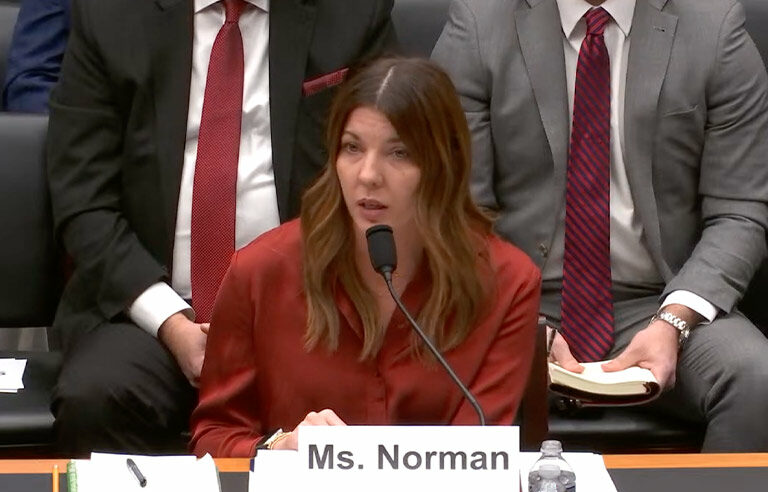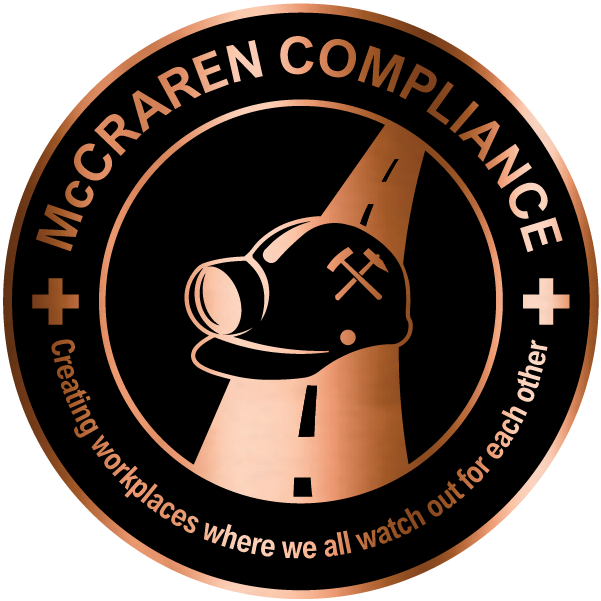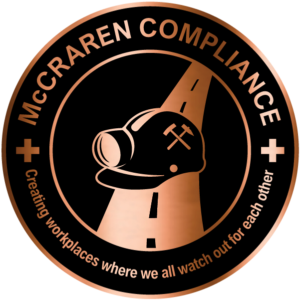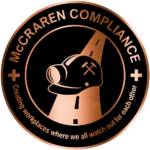
Haley Norman, chair-elect of the American Traffic Safety Services Association, testified during a Feb. 12 House Highways and Transit Subcommittee hearing. Photo: The Committee on Transportation and Infrastructure
Washington — Expanded use of in-vehicle technology for trucks can improve safety in work zones, transportation experts testified during a Feb. 12 House Highways and Transit Subcommittee hearing.
Haley Norman, chair-elect of the American Traffic Safety Services Association, cited the success of a recently developed telematic device that issues an audible alert to drivers when they’re approaching a work zone.
“It has given a great sense of security to our workers that we are taking another step to let people know that they are in their ‘office’ on the side of the road,” Norman said in response to questioning from Rep. Shomari Figures (D-AL).
Michael Hanson, director of the Minnesota Department of Public Safety Office of Traffic Safety, agreed that the technologies are effective. Hanson said to Figures that “different avenues like that” allow messages and alerts to be transmitted into truck cabs instead of being posted on stationary signs. “I think there are ways we can continue to improve those,” he added.
Multiple panelists also advocated for automatic emergency braking systems, including for large trucks.
Data from the Fatality Analysis Reporting System shows that 891 fatalities occurred in work zones in 2022, up from 590 in 2011. In her written testimony, Norman said crashes in work zones have caused an annual average of 115 worker fatalities over the past five years.
Curbing speeding within work zones was also discussed. Cathy Chase, president of Advocates for Highway and Auto Safety, commended an increase in federal grant funding for automated speed enforcement in work zones under the Infrastructure Investment and Jobs Act.
“They’ve been wildly effective in reducing crashes in those areas,” Chase said, “and we hope that in the next reauthorization, it’s expanded even further.”
(President Donald Trump signed an Executive Order on Jan. 20 that revoked funding appropriated through the act.)
Rep. David Rouzer (R-NC), who chairs the subcommittee, said in his opening remarks that “enforcement can discourage reckless driving in work zones, but we can also look at ways to better design work zones and related traffic patterns to curtail these incidents.”
Under a Federal Highway Administration final rule that went into effect in December, state departments of transportation are required to use positive protection devices such as temporary traffic barriers in work zones when:
- Work zones lack tunnels, bridges or other means for workers to escape traffic.
- Workers face “substantial” exposure to traffic, in zones set up for two weeks or more.
- Workers operate within one lane width of lanes open to traffic.
- Speeds of at least 45 mph or high traffic volumes are anticipated.
- Drop-offs, unfinished bridge decks or other road hazards will be in place overnight or longer.
McCraren Compliance offers many opportunities in safety training to help circumvent accidents. Please take a moment to visit our calendar of classes to see what we can do to help your safety measures from training to consulting.
Original article published by Safety+Health an NSC publication


